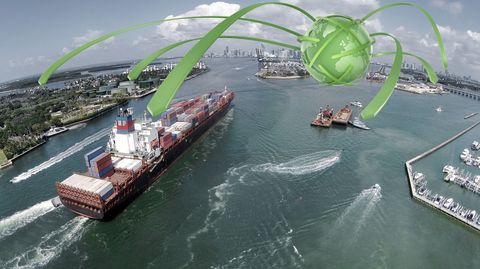During the years following the recession, considerable attention was given to the negative impact the downturn had on the European Union and the broader region, with many European nations experiencing significant economic strife.
At the height of the crisis, countries such as Greece, Portugal, Ireland, Spain and Cyprus all found themselves unable to repay key debts without assistance from external organizations, leading to concerns that the region would remain a drag on global economic recovery for many years to come.
However, a new report from the International Monetary Fund (IMF) has offered evidence that the European community has been able to turn this around, to the point where the organization has now referred to Europe as "an engine for global trade". However, a number of key risk factors persist, which means that further steps need to be taken before the region can take full confidence in its long-term sustainability.
Positive economic trends across the region
According to the IMF's analysis, overall real GDP growth in Europe is projected to have hit 2.4 percent in 2017, which is up from 1.7 per cent last year and exceeds projections previously made in April 2017.
The eurozone has been a particularly significant beneficiary of these positive trends - a considerable turnaround from the post-recession era, when the longevity of the euro bloc had been called into question. Indeed, growth rates have not been this even for eurozone nations for nearly two decades, with many poorer member states experiencing strong growth due to EU funds designed to help them catch up to their richer peers.
This recent European growth has been driven primarily by domestic demand, including a rise in investment, the benefits of which are now proliferating worldwide through international trade. Europe's contribution to the growth of global merchandise imports for 2016-17 was shown to be similar to that of China and the US combined, underlining the IMF's view that Europe has become a key driver for cross-border commerce.
Potential challenges remain
However, the report also indicated that potential economic rainclouds continue to linger on the horizon, suggesting that further action is needed to shore up the recent gains that Europe has enjoyed.
For example, even though unemployment has decreased throughout the continent, wage growth remains slow in most developed European nations, while even those countries experiencing more rapid salary growth have not seen productivity improve at the same pace over the last two years, potentially harming Europe's competitive edge.
Other potential factors that could undermine longer-term European performance include bad loans inherited from the financial crisis, an ageing population, the spread of protectionism, geopolitical tensions and export losses caused by China's recent economic downturn, while the impact of Brexit is yet to be fully seen.
What steps are needed next?
As such, the IMF has recommended that Europe's leaders take advantage of the current positive trading conditions to shore up potential weaknesses before any of these risk factors begin to bite.
For example, it recommended that advanced European economies with high public debt - such as Belgium, France, Italy, Portugal, Spain and the UK - should be working to lower their debt, while countries with healthier budgets, such as Germany, the Netherlands and Sweden, should work to accelerate their current growth through greater public investment in infrastructure, integrating immigrants and investing in housing.
Emerging market economies with larger budget deficits - such as Hungary, Poland and Romania - were called upon to enhance the quality of their public expenditure and adjust the composition of their revenue streams. It was also suggested that new reforms are needed to close the gap between poorer and richer nations, aimed at strengthening institutions and legal frameworks to enhance the overall health of the business environment.
In this way, European nations can maintain their position at the forefront of global trade and continue to champion trade liberalization, at a time when leading countries in other regions are losing momentum on this front.






